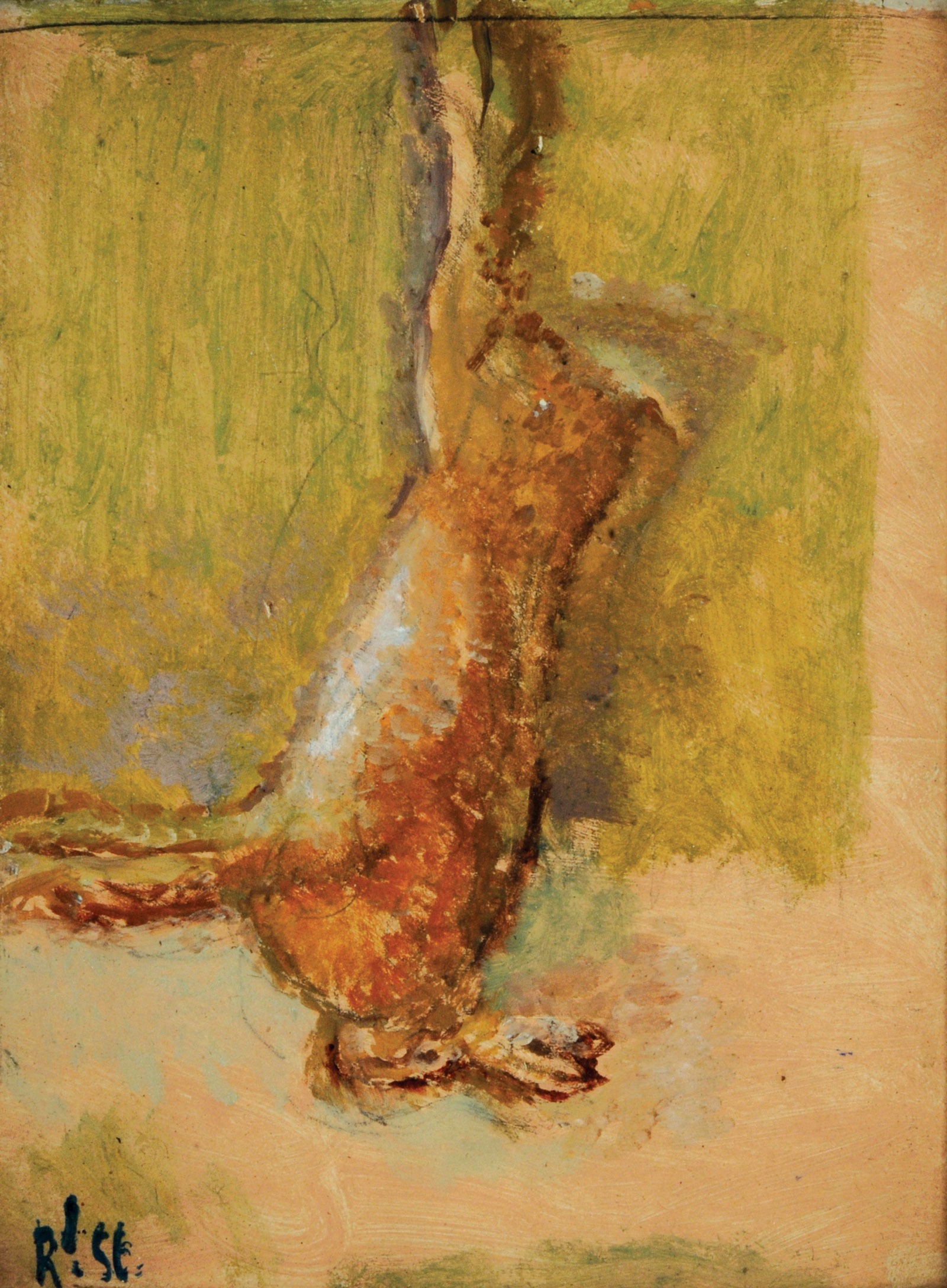Two Hares Falling out of Breath
Vision, knowledge, flesh
Carol Mavor
The truth is a category that remains in suspension while we’re alive.
—Javier Marias, Thus Bad Begins
This is Walter Sickert’s oil sketch, a little sliver of a painting entitled A Dead Hare.[1] The exact date of the sketch is sketchy (somewhere between 1927 and 1935). Smaller than an eight-by-ten-inch sheet of paper, this hare is smaller than a hare. The animal is roughly outlined: a quick poem of swift brushstrokes, without much detail. A sketch is unpretentious—a rough draft of a more finished work of art that is yet to come.

Dead Hare was painted by a self-styled enigmatic artist who is famous for his depictions of brutality, as in his four “Camden Town Murder” paintings from 1908. In 1907, Sickert painted a picture of his bedroom at 6 Mornington Crescent, London, and entitled it Jack the Ripper’s Bedroom. (Sickert’s landlady suspected that the previous tenant may have been the Ripper.) Sickert courted association with Jack the Ripper, as a “party trick”—like pulling a rabbit out of a hat.[2] Believing that a rabbit comes out of a hat and that Sickert is Jack the Ripper are fantastic tales, requiring (to quote Samuel Taylor Coleridge) “the willing suspension of disbelief ... which constitutes poetic faith.”[3] Like overlooking, but not denying, the fact that your delicious stew is made from a real rabbit. (Perhaps that is why the “Utopians” of Thomas More’s island made it a law that all slaughtering should take place out of town.) Like believing in the reality of a photograph but not denying that it is just an image on flat paper, the latter a subject that I will return to when discussing Richard Learoyd’s very large photograph, Dead Hare (2012).
In Sickert’s painting, the killing has happened. The freshly caught hare is a not-yet meal. It may be cooked up as a jugged hare, a traditional British dish for which a whole hare is cut into pieces, “larded here and there,” marinated, and cooked in red wine and juniper berries in a tall jug that stands in a pot of water.[4] Often the blood of the hare is added at the end.
More elaborate recipes for jugged hare call for making a sauce, to be poured over the dish at the time of serving, consisting of the hare’s blood, its pulverized liver, and cream. To combine milk with blood is taboo. Or as Deuteronomy 14:21 has it: “You shall not boil a kid in its mother’s milk.”[5] But Sickert’s hare is not yet cut up: it is not yet larded here and there; not yet cooked with red wine and juniper berries; not yet sauced in its own blood (and possibly its pulverized liver and some cream). Hanging in a larder by its hind legs, it is a sketch of a dish yet to come.